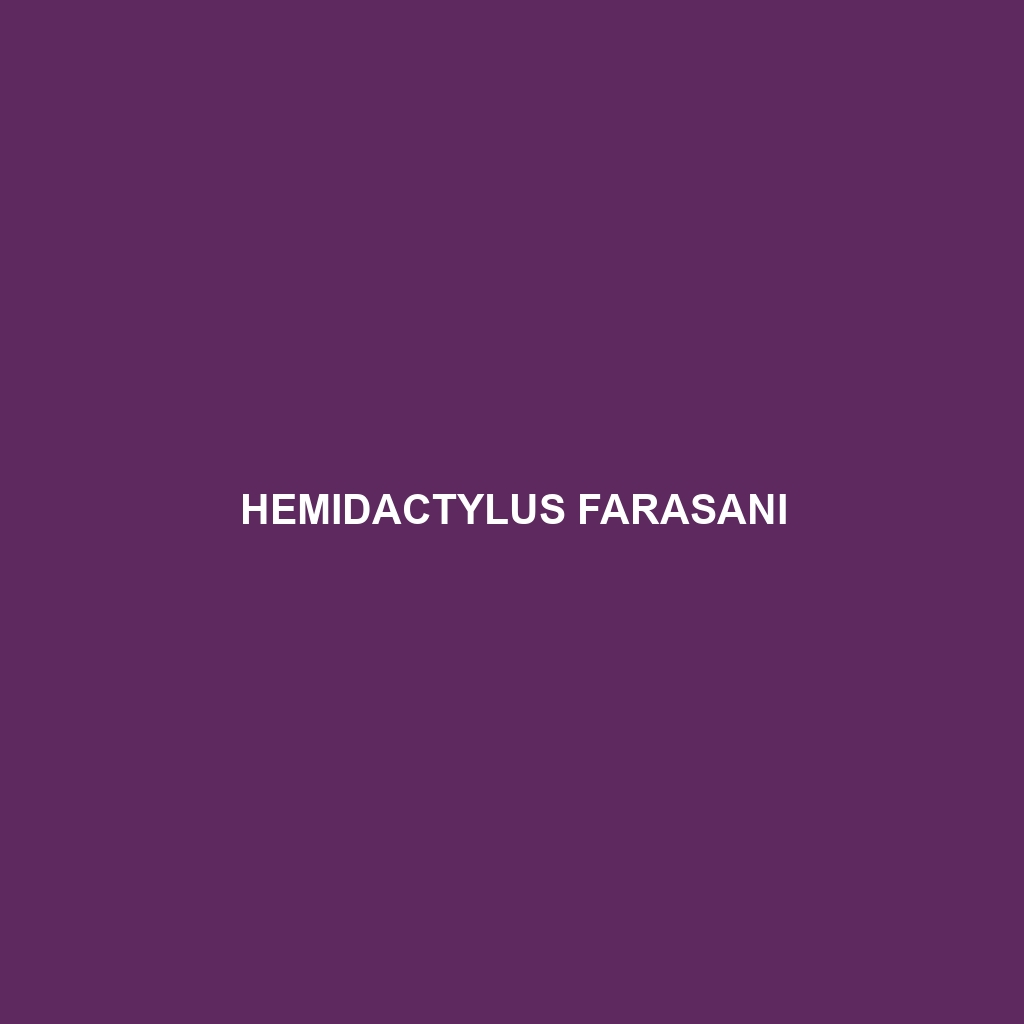Common Name
Hemidactylus farasani
Scientific Name
Hemidactylus farasani
Habitat
Hemidactylus farasani, commonly known as the Farasan gecko, primarily inhabits the Farasan Islands located in the Red Sea. This species is well-adapted to a range of environments, including savannas, rocky outcrops, and coastal areas near marine habitats. The climate of these islands features a semi-arid environment, with hot summers and mild winters which provides an ideal setting for the Farasan gecko’s survival. They can usually be found climbing on various surfaces to hunt for food or to seek shelter.
Physical Characteristics
The Hemidactylus farasani is a medium-sized gecko, typically measuring between 8 to 12 centimeters (3 to 5 inches) in length. This species is distinguished by its robust body, large eyes, and flattened tail, which aids in their climbing ability. The coloration ranges from a pale yellow to a brownish-grey, often featuring dark spotting or banding along the body for camouflage among the rocky environments. Their skin is covered with tiny scales that help retain moisture, an essential adaptation for survival in semi-arid conditions.
Behavior
Nocturnal in nature, the Hemidactylus farasani is most active during the night when it hunts for food and engages in social interactions. They exhibit typical gecko behavior, such as climbing and leaping between branches and rocks. These geckos are known for their territorial nature, often displaying aggressive postures to fend off intruders. During the mating season, males perform elaborate courtship displays, which can include head-bobbing and tail-waving to attract females, showcasing their vibrant colors.
Diet
The Hemidactylus farasani is primarily an insectivore, feeding on a variety of insects such as crickets, moths, and beetles. They have developed a unique feeding pattern wherein they actively hunt at night when their prey is more abundant. Their keen eyesight plays a crucial role in their ability to detect movement in low light conditions, allowing them to catch unsuspecting insects swiftly. Occasionally, they may also consume small arthropods, supplementing their diet and contributing to their role as a predator in their habitat.
Reproduction
The reproductive cycle of Hemidactylus farasani typically occurs during the warmer months, aligned with the peak availability of food sources. Females lay 1-2 clutches of eggs each season, with each clutch containing 1 to 2 eggs. The gestation period lasts about 45 to 60 days, after which the hatchlings emerge fully formed and independent. The parental care observed in this species is minimal, with the hatchlings relying on their instinctual behaviors for survival soon after birth.
Conservation Status
As of now, the conservation status of Hemidactylus farasani is considered Least Concern according to the IUCN Red List. There are currently no significant threats documented that directly impact their population levels. However, ongoing habitat degradation and climate change could pose future risks to their preferred environments. Conservation efforts are important for maintaining the ecological balance of the Farasan Islands and ensuring that the habitat of this species remains intact.
Interesting Facts
One of the unique adaptations of the Hemidactylus farasani is its ability to shed its tail if caught by a predator, a survival mechanism known as autotomy. The shed tail can continue to move, distracting the predator while the gecko escapes. Additionally, this species has a fascinating ability to change its coloration through physiological changes, allowing it to blend into its environment even better.
Role in Ecosystem
The Hemidactylus farasani plays a vital role in maintaining the ecological balance of its habitat. As a predator of various insects, it helps control pest populations, contributing to the overall health of the ecosystem. Furthermore, the gecko serves as prey for larger birds and reptiles, acting as a key component of the food web. Its presence indicates a healthy, functioning ecosystem, making it an integral part of the Farasan Islands’ biodiversity.
